Related Research Articles

The Balfour Declaration was a public statement issued by the British government in 1917 during the First World War announcing its support for the establishment of a "national home for the Jewish people" in Palestine, then an Ottoman region with a small minority Jewish population. The declaration was contained in a letter dated 2 November 1917 from the United Kingdom's Foreign Secretary Arthur Balfour to Lord Rothschild, a leader of the British Jewish community, for transmission to the Zionist Federation of Great Britain and Ireland. The text of the declaration was published in the press on 9 November 1917.
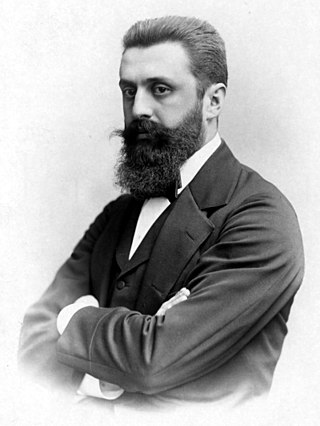
Zionism is a nationalist movement that emerged in the 19th century to enable the establishment of a homeland for the Jewish people in Palestine, a region roughly corresponding to the Land of Israel in Jewish tradition. Following the establishment of Israel, Zionism became an ideology that supports "the development and protection of the State of Israel".

Chaim Azriel Weizmann was a Russian-born biochemist, Zionist leader and Israeli statesman who served as president of the Zionist Organization and later as the first president of Israel. He was elected on 16 February 1949, and served until his death in 1952. Weizmann was fundamental in obtaining the Balfour Declaration and later convincing the United States government to recognize the newly formed State of Israel.

This is a partial timeline of Zionism in the modern era, since the start of the 16th century.
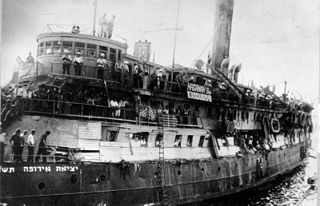
A homeland for the Jewish people is an idea rooted in Jewish history, religion, and culture. The Jewish aspiration to return to Zion, generally associated with divine redemption, has suffused Jewish religious thought since the destruction of the First Temple and the Babylonian exile.
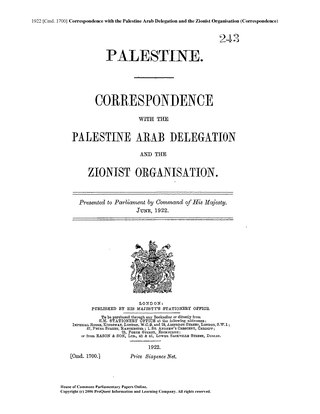
The Churchill White Paper of 3 June 1922 was drafted at the request of Winston Churchill, then Secretary of State for the Colonies, partly in response to the 1921 Jaffa Riots. The official name of the document was Palestine: Correspondence with the Palestine Arab Delegation and the Zionist Organisation. The white paper was made up of nine documents and "Churchill's memorandum" was an enclosure to document number 5. While maintaining Britain's commitment to the Balfour Declaration and its promise of a Jewish national home in Mandatory Palestine, the paper emphasized that the establishment of a national home would not impose a Jewish nationality on the Arab inhabitants of Palestine. To reduce tensions between the Arabs and Jews in Palestine the paper called for a limitation of Jewish immigration to the economic capacity of the country to absorb new arrivals. This limitation was considered a great setback to many in the Zionist movement, though it acknowledged that the Jews should be able to increase their numbers through immigration rather than sufferance.

Christian Zionism is an ideology that, in a Christian context, espouses the return of the Jewish people to the Holy Land. Likewise, it holds that the founding of the State of Israel in 1948 was in accordance with Bible prophecy: that the re-establishment of Jewish sovereignty in the Levant — the eschatological "Gathering of Israel" — is a prerequisite for the Second Coming of Jesus Christ. The term began to be used in the mid-20th century, in place of Christian restorationism, as proponents of the ideology rallied behind Zionists in support of a Jewish national homeland.

The Faisal–Weizmann agreement was signed by Emir Faisal, the third son of Hussein ibn Ali al-Hashimi, King of the short-lived Kingdom of Hejaz, and Chaim Weizmann, President of the Zionist Organization on 3 January 1919. Signed two weeks before the start of the Paris Peace Conference, it was presented by the Zionist delegation alongside a March 1919 letter written by T. E. Lawrence in Faisal's name to American Zionist leader Felix Frankfurter as two documents to argue that the Zionist plans for Palestine had prior approval of Arabs.

The King–Crane Commission, officially called the 1919 Inter-Allied Commission on Mandates in Turkey, was a commission of inquiry concerning the disposition of areas within the former Ottoman Empire.

Nahum ben Joseph Samuel Sokolow was a Zionist leader, author, translator, and a pioneer of Hebrew journalism.

William Eugene Blackstone was an American evangelist and Christian Zionist. He was the author of the Blackstone Memorial of 1891, a petition which called upon America to actively return the Holy Land to the Jewish people. Blackstone was influenced by Dwight Lyman Moody, James H. Brookes, and John Nelson Darby. He is remembered as the author of the Blackstone Memorial.
The Gathering of Israel, or the Ingathering of the Jewish diaspora, is the biblical promise of Deuteronomy 30:1–5, made by Moses to the Israelites prior to their entry into the Land of Israel.
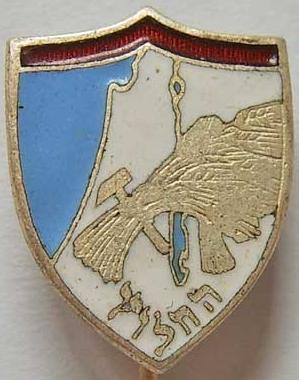
HeHalutz or HeChalutz was a Jewish youth movement that trained young people for agricultural settlement in the Land of Israel. It became an umbrella organization of the pioneering Zionist youth movements.
As an organized nationalist movement, Zionism is generally considered to have been founded by Theodor Herzl in 1897. However, the history of Zionism began earlier and is intertwined with Jewish history and Judaism. The organizations of Hovevei Zion, held as the forerunners of modern Zionist ideals, were responsible for the creation of 20 Jewish towns in Palestine between 1870 and 1897.

"A land without a people for a people without a land" is a widely cited phrase associated with the movement to establish a Jewish homeland in Palestine during the 19th and 20th centuries. Its historicity and significance are a matter of contention.

Christian Zionism in the United Kingdom is a Christian ideology that sees the return of the Jews to Israel as a fulfilment of scriptural prophecy. Supporters of Christian Zionism believe that the existence of the Jewish State can and should be supported on theological grounds.
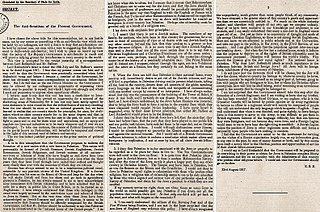
Anti-Zionism is opposition to Zionism. Although anti-Zionism is a heterogeneous phenomenon, all its proponents agree that the creation of the modern State of Israel, and the movement to create a sovereign Jewish state in the region of Palestine—the biblical Land of Israel—was flawed or unjust in some way.
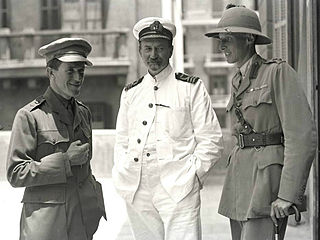
The Hogarth Message was a January 1918 message from Commander David Hogarth, head of the Arab Bureau in Cairo, to Hussein bin Ali, Sharif of Mecca, following Hussein's request for an explanation of the Balfour Declaration.
This timeline of anti-Zionism chronicles the history of anti-Zionism, including events in the history of anti-Zionist thought.
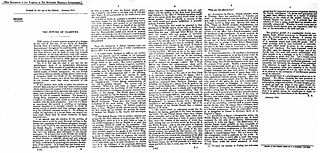
The Future of Palestine, also known as the Samuel memorandum, was a memorandum circulated by Herbert Samuel to the British Cabinet in January and March 1915, two months after the British declaration of war on the Ottoman Empire.
References
- ↑ Merkley, Paul Charles (1998). The Politics of Christian Zionism, 1891-1948 p. 68 ff.
- 1 2 3 4 "Blackstone Memorial" . Retrieved 31 October 2023.
- ↑ William Blackstone papers, Wheaton College, Il.
- ↑ "Archived copy". Archived from the original on 2011-07-18. Retrieved 2010-07-18.
{{cite web}}: CS1 maint: archived copy as title (link)